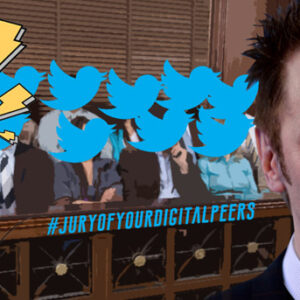Last Updated on August 5, 2021

How many of you have been to a theatre recently, where the audio/visual presentation of the movie was subpar? I wager a lot of you. With theatre attendance down, and flat box-office, a lot of theatre chains seem to be cutting corners when it comes to the presentation of their films. To me, this has only really become a problem in recent years, with the popularization of digital and 3D.

In order to properly show a film digitally, a certain configuration is needed. I’m not a particularly technical guy, and I have no idea what it is- other than the fact that 3D and 2D need different bulbs. In an effort to cut costs, a lot of theatres don’t seem to be taking this into consideration, and the common complaint of a 3D film being too dark is common.
Often, we chalk this up due to a hasty post-conversion, but this is not always the case. Often it’s that the wrong bulb is being used. Whether this is due to stinginess or a lack of knowledge among distributors is open for argument, but if we’re paying upwards of $15 to see a movie, it better damn well look and sound AMAZING.
It’s enough of a problem that when Terrence Malick was prepping TREE OF LIFE for release, he sent along a form begging projectionists to show it at his exact specifications. These instructions are not always followed, and I can’t begin to count the number of times I’ve sat through a film that looked like the film was being projected through a dark cloth.
Probably the worst experience I’ve had in awhile was with DON’T BE AFRAID OF THE DARK, which was almost indecipherable. I’m sure the film was intentionally given a dark look, but I doubt it was near the extreme I saw it with back in August. It was so bad that I could barely tell what the monsters looked like, and I left the theatre with dry eyes, and a headaches. Not exactly a pleasant night out at the movies.
Another troubling issue is the rise of fake-IMAX. Real, 65mm IMAX is amazing, and the closest thing our generation will ever get to the grandeur of great 70mm roadshow presentations common in the late fifties, sixties, and seventies. For me, the most memorable theatrical experiences I’ve had in the last five years were all on IMAX. They were THE DARK KNIGHT (even more impressive by using the full 1:44:1 ratio in some scenes), INCEPTION, and AVATAR. Watching those films on IMAX felt like an event.

Back in May, I was unlucky enough to experience fake IMAX, which is nothing but digital projection (real IMAX is 65mm celluloid) on a slightly larger than average screen. Even worse, the price is identical! I fully intend to go see MISSION IMPOSSIBLE: GHOST PROTOCOL on IMAX next month, but I know that in my area, there’s only one theatre equipped to show it the way it’s meant to be seen. I’d hate to see anyone else get suckered in by this scam, and see it in a way that really devalues the format (it still amazes me IMAX allowed itself to be branded this way).
If exhibitors want us to return to the theatres, people need to be able to experience a grandeur they can’t at home. In the fifties, the answer to television was Cinemascope, but that’s no longer enough with home theatres so affordable. Instead, the presentation needs to be exquisite, and may I suggest cell phone blockers, to prevent people from texting every two minutes. An art house theatre in Montreal uses this, and it’s attendance has skyrocketed.




















Follow the JOBLO MOVIE NETWORK
Follow us on YOUTUBE
Follow ARROW IN THE HEAD
Follow AITH on YOUTUBE